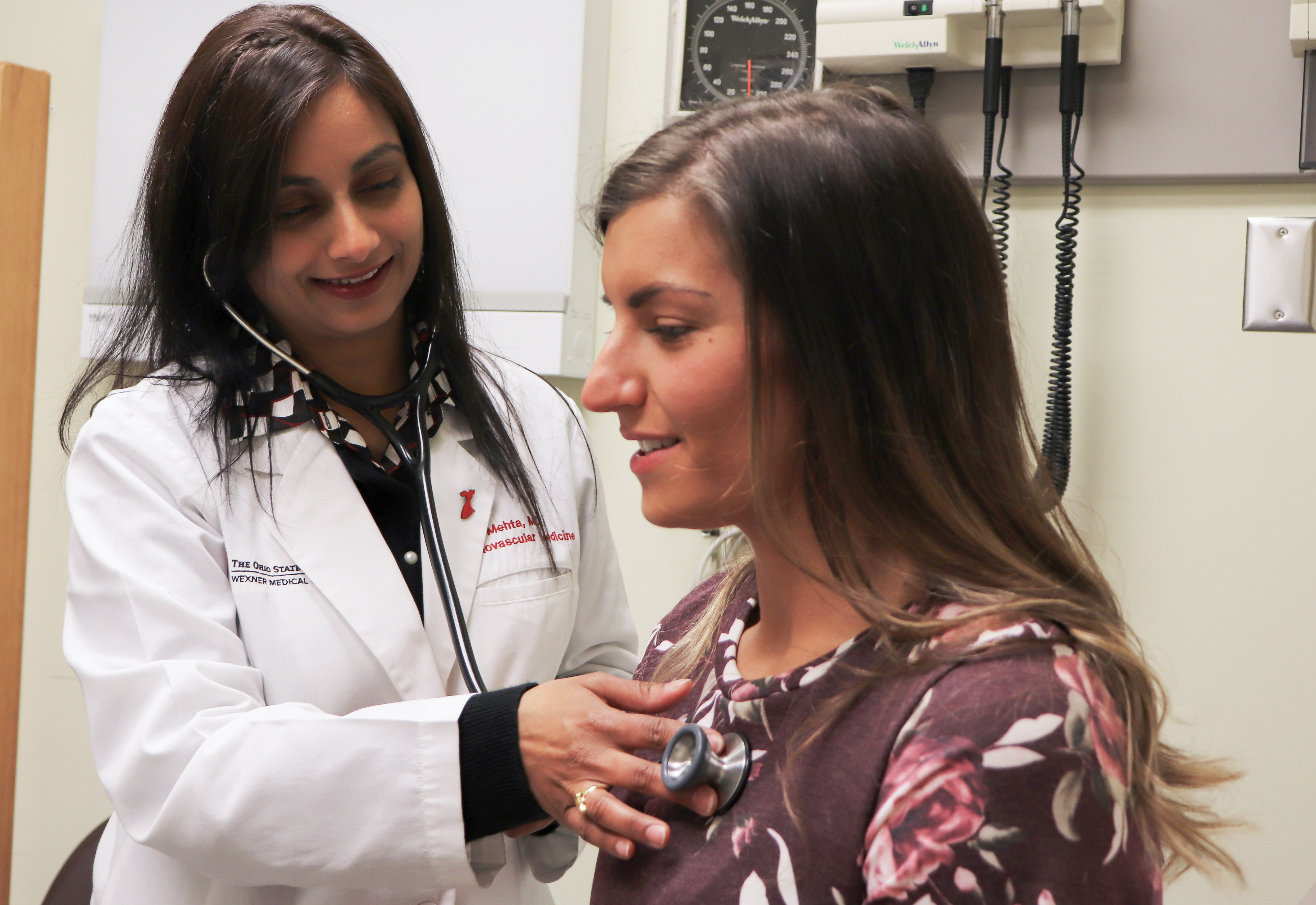
Cardiologist Dr. Laxmi Mehta examines a patient at The Ohio State University Wexner Medical Center. She worked with the American Heart Association to author the first scientific statement about breast cancer and heart disease.
A new scientific statement issued by the American Heart Association underscores the commonalities between cardiovascular disease and breast cancer among women, and it calls for more focus on research and specialized treatment where the diseases overlap.
The statement, chaired by Dr. Laxmi Mehta, a cardiologist at The Ohio State University Ross Heart Hospital, is the first to compile the newest information on prevalence, shared risk factors and cardiotoxic effects of cancer therapy, as well as prevention and treatment of heart disease in breast cancer patients. It appears in the journal Circulation.
Cardiovascular disease is the leading cause of death for women in the U.S. and globally. However, more women think breast cancer is the bigger threat. In many ways, the two diseases can intertwine.
“Heart disease and breast cancer share common risk factors such as age, sedentary lifestyle and smoking,” said Mehta, who is also director of preventative cardiology and women’s cardiovascular health at Ohio State. “More importantly, we see that many of the same things that improve heart health (healthy diet, healthy weight, exercise, not smoking) can also reduce a woman’s risk for breast cancer.”
Mehta said the use of hormone replacement therapy is another common risk factor for women. Studies have shown it can raise the risk of breast cancer and heart disease among certain groups of women, and is therefore a risk factor that can be modified. Two factors that can’t be changed are age and genetics. As women get older, their risk for breast cancer increases. The incidence of cardiovascular risk also increases with age, even more so with the onset of menopause.
The most common heart-related side effect of cancer therapy is left ventricular dysfunction. Coronary artery disease, valve disease, arrhythmias and heart failure can also occur.
Mehta and her co-authors said it’s vital for cardiologists and oncologists to work together in caring for cancer patients. A person’s heart health should be considered when first making treatment selections and while monitoring treatment progression. In some cases, pre-existing heart conditions may guide the course of cancer care, or the cancer therapy itself can impact the heart and alter treatment plans.
“These potential side effects impact each patient differently. Let me be clear, we are not suggesting that breast cancer patients should worry about or refuse their recommended breast cancer treatment. Modern treatment is essential for fighting breast cancer and improving survival. The potential cardiovascular effects are an important part of the conversation that patients should have with their oncologist,” Mehta said.
The interconnection doesn’t end when the cancer is gone. Mehta said long-term breast cancer survivors can develop heart problems after certain cancer treatments, including chemotherapy, radiation and targeted therapy. Survivors also have increased cardiovascular risk factors, and the statement points out that heart disease prevention and modification of cardiac risk factors is essential during and after breast cancer treatment.
Over the last decade, the collaborative field of cardio-oncology has grown to provide the best cancer care without impacting heart health. The multi-disciplinary approach has led to new clinical methods to reduce the heart-related effects of cancer treatment. Mehta and her co-authors called for more emphasis on prevention before a particular treatment damages the heart.
“Fortunately, with the ongoing advances in cancer treatment we are seeing improved survival of cancer patients. However heart disease prior to, during or after cancer treatment can impact outcomes. We need to be successful in treating both cancer and heart disease,” Mehta said. “Additionally we hope this paper drives even more interest in the field so we can continue to see the development of more training programs, research and guideline development in the field of cardio-oncology.”




